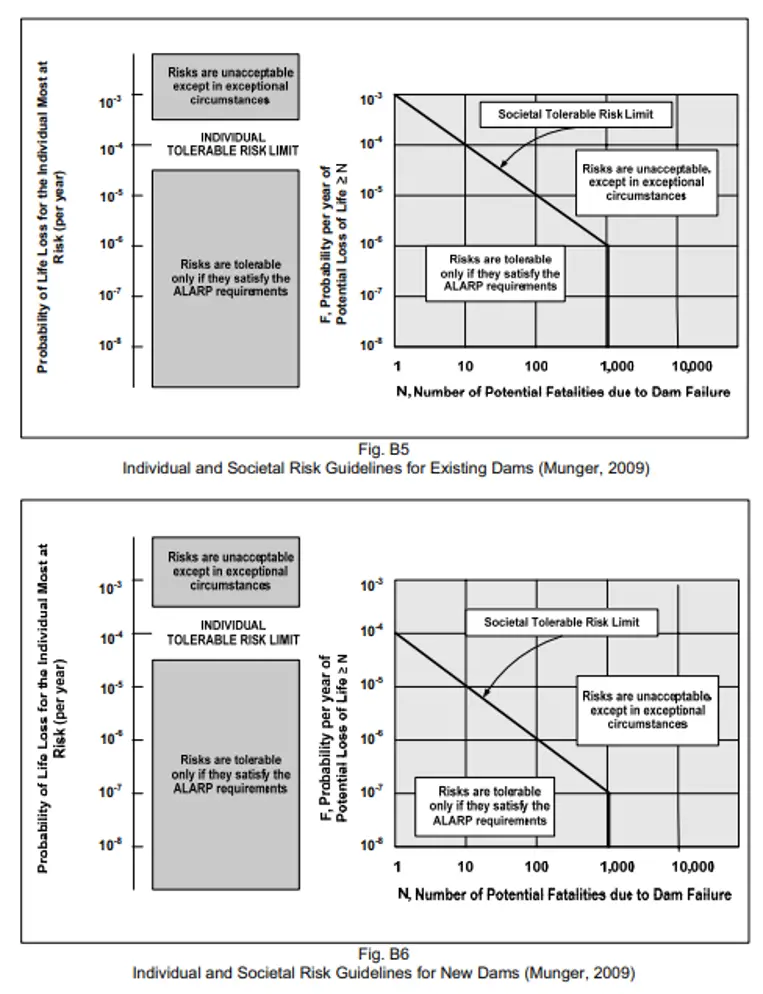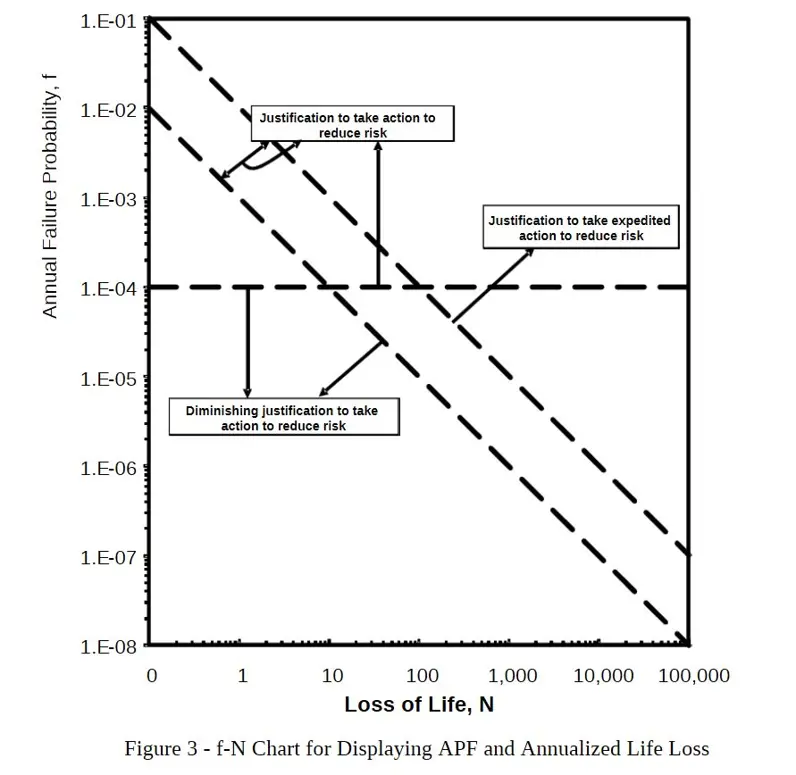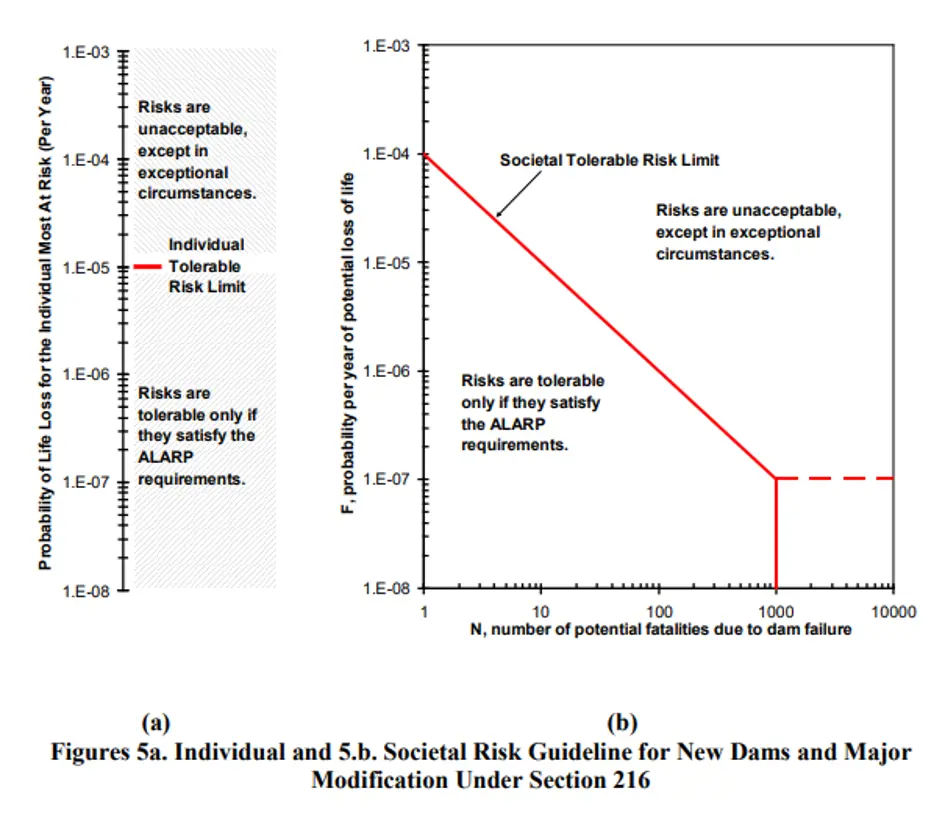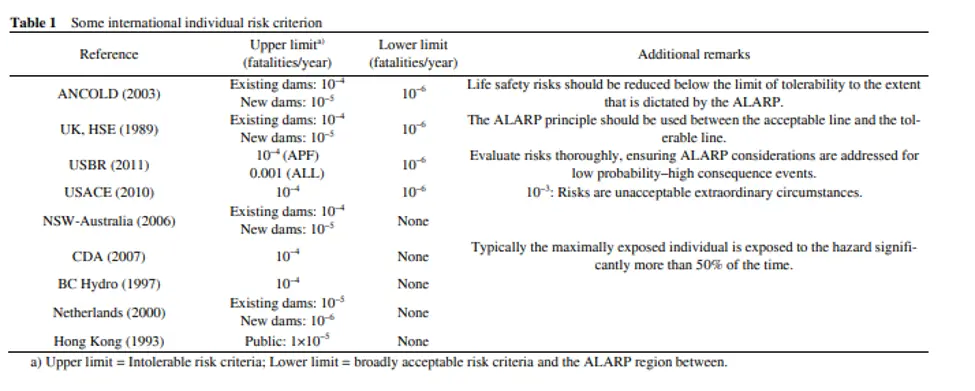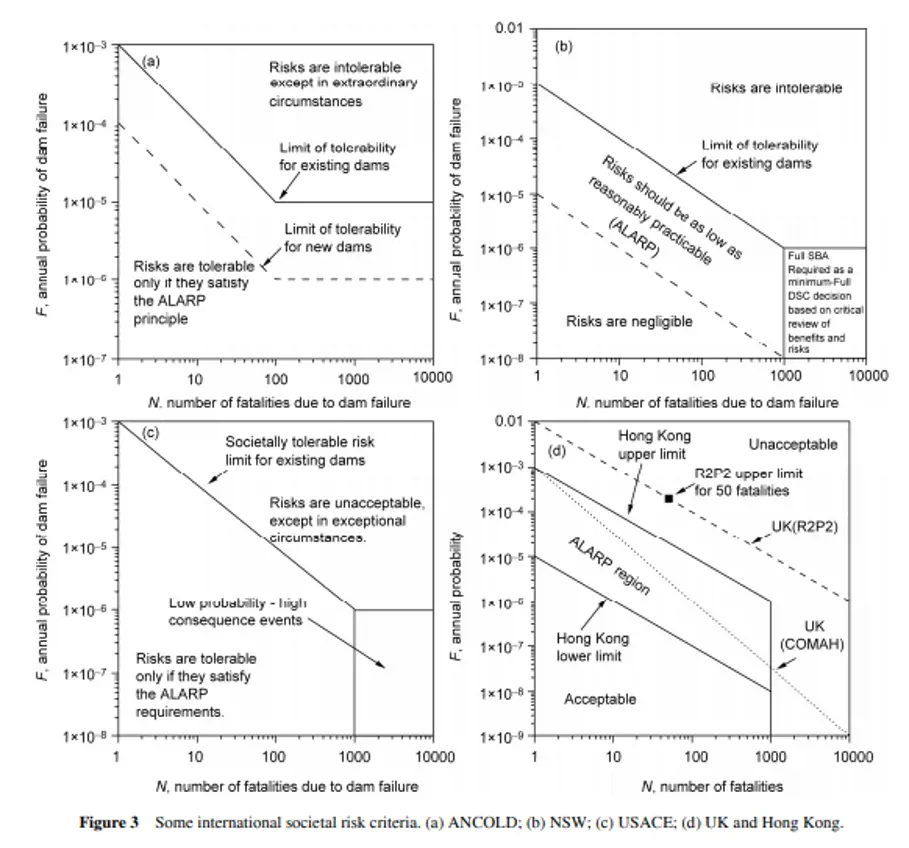A client asked us to perform a risk evaluation for the methodological review of a dam break. As a result, we reviewed risk guidelines regarding the public living or working in the inundation zone of a dam. Ultimately, the goal is to help decide tolerable risk vs. relocation of potentially impacted homes or livelihoods.
We think this is an important subject and have thus decided to publish it. In Section 1, we review the procedure leading to risk-informed decision-making for inundation areas. In Section 2.3, there is a review of individual and societal risk guidelines for old and new dams from various sources, including the hydro industry and the United States Army Corps of Engineers (USACE).
As you will see, risk tolerance is generally jurisdictional. As a result, tolerance threshold is not universally valid.
1. Procedure to Define Individual and Societal Risk in Dam Break Analyses
The key point in this type of study is to determine the likelihood of fatalities and their number on an annualized base (annualized life loss (ALL)).
To perform these evaluations, it is necessary to:
- Check the assumptions made in the inundation study, such as scenarios, rheology, etc.
- Evaluate the likelihood of the inundation scenario. USACE uses the term Annual Probability of Failure (APF). We would use ORE2_Tailings to define the APF.
- Check the quality of the topography used to perform the inundation study. Our experience has proven details may be very important. A state-of-the-art study should include erosion/deposition evaluation along the channel during the flood.
- Transform that study into a probabilistic evaluation, or, in other words, define the probability of a certain depth and velocity of flow. This may require a few additional runs of the flow model, to be performed by the hydraulics engineers based on data sets we supply.
- Use a “flow vs. lethality” function to locate endangered population and determine the ALL. The figure below is copied from our book on Tailings Dams, Chapter 12, Consequences. This graph was originally proposed by Smith et al. 2014.
The final step is to use the above to deliver the likelihood and number of fatalities from the break. Indeed, these constitute a “dot” in the individual and societal tolerance graphs (examples further down in this text).
At that time, risk-informed decision-making can be performed regarding mitigation, system changes, etc.
2. Review of Individual and Societal Risk Guidelines for Old and New Dams
A suitable guideline would be, for instance, “Dam Safety Management: Operational phase of the dam life cycle” (ICOLD 2017). See Figures B5 and B6 below.
An additional resource is USACE’s 2013 document “Interim Tolerable Risk Guidelines for USACE Dams.” These guidelines describe ALL estimates as follows:
- ALL > 0.01 lives/year: Risk in this range is unacceptable except in exceptional circumstances. For this range, Reclamation (2003) states, “…there is justification for taking immediate action to reduce risk.” This is represented by the upper minus 1 sloping line in Figure 3 (below).
- ALL between 0.01 and 0.001 lives/year: Risk in this range is also unacceptable except in exceptional circumstances. For this range, Reclamation (2003) states, “…there is justification for taking action to reduce risk.” This is represented by the area between the two minus 1 sloping lines in Figure 3.
- ALL < 0.001 lives/year. Risk in this range may be considered tolerable provided the other guidelines are met. For this range, Reclamation (2003) states, “The justification to implement risk reduction actions or conduct additional studies diminishes as estimated risks become smaller than 0.001 lives/year. Risk reduction action costs, uncertainties in the risk estimates, scope of consequences, operational and finally other water resources management issues play an increased role in decision-making. One should consider reasonable and prudent actions for implementation when the risk is in this range.”
Figures 5a and 5b below come from the same reference. They display individual and societal risk guidelines for new and major modifications under Section 216.
3. International Review of Risk Acceptance Criteria for Dams
A study from Li et al. 2015 shows a comparison of tolerances across different institutions following Table 1 and Figure 3.
4. Closing Remarks
One should not perform dam break studies deterministically. Indeed, one-magic-number results are insufficient to facilitate risk-informed decision-making. Furthermore, one-number solutions may be too prudent or significantly underestimate reality. State-of-the-art modeling should include erosion/deposition evaluation along the flood channel.

